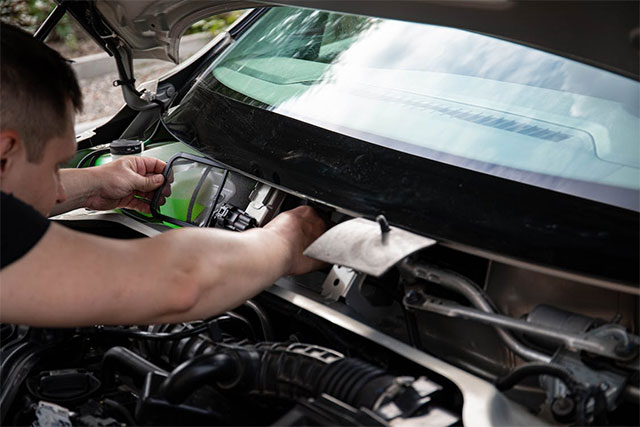Owning a car is one of the most essential purchases for many of us, unless we live in a city with excellent public transportation where it can be easier to get around by bus, train, tram, ferry, walking, etc., than to try and find parking and battle traffic.
Car ownership does involve plenty of responsibility, though, and investment of time, money, and energy to keep it well maintained and running optimally.
When it comes to maintenance and repair work, it pays to do some jobs yourself, where possible, but plenty of things are also best left to a professional. Here are tips for tasks you might DIY and others that it’s best to call a mechanic to examine and fix.

Things Worth Learning to Do Yourself
There are many jobs you can take care of yourself that you should be able to learn easily enough. For example, one of the simplest to start with is changing your vehicle’s windscreen wiper blades. The frequency varies according to where you live and the weather you drive in, but most people only need to do this job around once a year. Whenever you notice your windshield isn’t getting as clean as you’d like when using your wipers, or if you hear scratching sounds or the like, it’s time to switch the old ones out for new.
You can usually purchase replacement parts for $20 to $30 per blade, and most products will click into place (and the ones you’re taking off you should snap out easily from the plastic clip that holds them in). You shouldn’t need tools to get this job done. In addition, it’s wise to top up your windshield washer tank every few months so there’s plenty of water and cleaning fluid to help the blades do their job. Most tanks are under the hood at the front of your car but always read the owner’s manual to locate the right spot and follow any instructions listed.
Another job most car owners can learn to do without too much fuss is replacing old oil with new products. It’s best to use overalls or other clothing protection when doing this task, as it can get a little messy, but as long as you have some car ramps or a jack stand to lift your car so you can get to the oil, plus a ratchet set and a container to catch and store the old oil ready for disposal, you should be set to go.
These days most newer vehicles don’t need an oil change for 5,000 to 7,000 miles, but this does vary, so again, check out the details listed in your owner’s manual to be sure. The older your car is, the more frequently you’ll likely have to do this job. It’s an important one not to miss, too, since you don’t want the oil in your car getting sludgy and dirty after a while and causing damage as it goes through your vehicle. Replacement oil typically costs between $30 and $50, depending on the type you need and how much is required.
Some other tasks worth doing yourself include swapping engine and cabin air filters. These are cost-effective parts, usually, and simple enough to replace yourself. Since filters should be changed regularly, it’s a job worth knowing how to do to save having to pay for a mechanic each time. You can also test the air conditioning in your car to ensure there aren’t any leaks that need to be taken care of. Stock up on quality AC tools to do these jobs, and you’ll save yourself money in the long run.
You can also take care of identifying and replacing blown fuses and lightbulbs, replacing worn-out car batteries, and testing and replacing coolant. Inflate tires as needed, too.
Tasks to Hire a Mechanic For
On the other hand, there are plenty of times when you really need to utilize a professional mechanic’s experience and expertise. For instance, you don’t want to mess about with engine or transmission diagnostics or repairs or do any work on the brakes, which are imperative for safety.
Balancing and rotating new tires usually requires proper, specialized equipment to do right, too, so a mechanic is your best option. Plus, putting in a new serpentine belt (which controls and affects numerous systems and parts) can be easily installed incorrectly if you don’t know what you’re doing, which can lead to car damage, so you should leave this up to a professional.
Other jobs to get a mechanic or other specialist to handle include fixing cracks and chips in the windshield, fixing or replacing transmission systems, and working on complex electrical components. You also don’t want to try to complete paint and body repairs yourself, as not only is it incredibly hard to color match correctly, but you don’t want to use unsafe paint, which could hurt your vehicle’s exterior.
Consider the above dos and don’ts when anything needs attending to in your car, and save money where you can on simple jobs so you have funds available to pay a mechanic for the more challenging ones.













